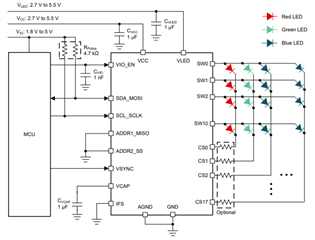Other Parts Discussed in Thread: LP5860,
Hello guys,
One of my customers is interested in LP5860/60T.
At this moment, they have the following questions.
Could you give me your reply?
Q1.
Why do LP5860/LP5860T family have 18ch constant current drivers?
I think it is for 6 RGB LED driving. But it is better for us to drive 8 RGB LED. So 24ch constant current output type is better for us.
Did TI aim to drive as many LEDs as possible in the smallest possible package?
Q2.
Is 18ch constant current the current main stream?
Q3.
What is the most success application which uses these ICs?
Your reply would be much appreciated.
Best regards,
Kazuya.


